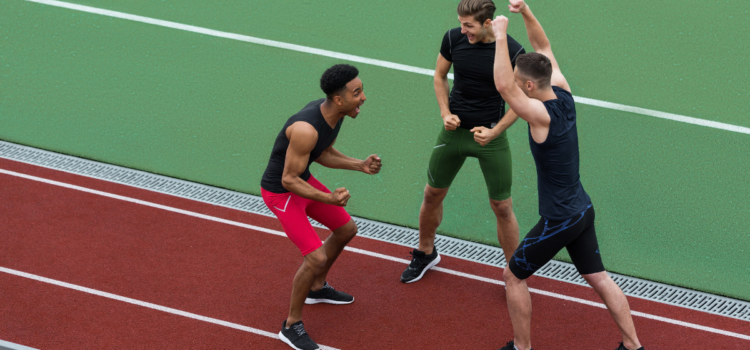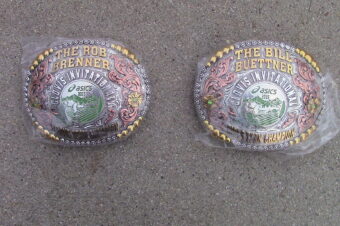

How to Close a Relay Strong As The Anchor Leg
BlogProduct Reviews/Top Ten Lists/Resources/TipsRunningStaffPicksTrack & Field, Anchored by Youth RunnerXC-Track-Running April 3, 2025 Lauren Keating 0

The relay is a unique event that requires individual speed from each of the four runners while still relying on team members to perform successfully. Each runner has a crucial role, but the anchor leg has the responsibility of finishing the race strong. Being the last athlete to race, the anchor leg is tasked with maintaining a lead, making up lost ground, or securing a final burst of speed to cross the finish line first.
The following strategies and tips aim to help young athletes close their relay race with strength and confidence to carry their team to victory.
1. Understanding the Role of the Anchor Leg
The anchor leg is not just about being the fastest runner on the team. All members of the relay team and important. However, there is added pressure to bring it home. This requires composure, strategic thinking, and the ability to not crack under pressure.
The primary responsibilities of the anchor leg include:
Receiving the Baton Smoothly: A clean baton exchange is critical to maintaining momentum. A mishandled baton or a drop can cost valuable seconds or lead to disqualification.
Assessing the Race Situation: The anchor leg must quickly evaluate the position of their team relative to competitors. Are they leading and need to maintain the gap, or are they behind and need to chase down opponents?
Executing a Strong Finish: The anchor must use all their energy for a powerful sprint to the finish line, ensuring maximum effort and efficiency in the final meters.

Photo: Smotherman Images | 2025 Covina Invitational
2. Perfecting the Baton Exchange
A successful relay relies heavily on smooth baton exchanges, and the anchor leg must be prepared to receive the baton at high speed. Here are some key points to focus on:
Positioning Matters: The anchor runner should be in the exchange zone, ready to accelerate as they receive the baton.
Strong Hand Placement: The anchor runner should extend their hand in the correct position, palm facing up, to securely grasp the baton without breaking stride.
Timing the Takeoff: The anchor should start moving before receiving the baton to minimize lost momentum.
3. Developing a Race Strategy
Anything can happen on the track, especially when relay runners are relying on their teammates’ performances.
The anchor leg should have a clear strategy depending on any race scenario:
Leading the Race: If ahead, the goal is to maintain the lead by running efficiently and fending off challengers.
Catching Up: If behind, the anchor must judge how much energy to expend early versus saving some for a final push.
A Close Race: In a tight contest, knowing when to accelerate, how to respond to competitors, and how to execute a finishing kick are crucial.
4. Building Speed and Endurance
A strong anchor leg requires both speed and endurance. To work towards being able to finish strong, runners should add in the following training methods:
Sprint Workouts: Short sprints (100m, 200m) help improve top-end speed.
Interval Training: Alternating between high-intensity and recovery periods builds endurance while maintaining speed.
Strength Training: Core exercises, plyometrics, and weight training enhance overall power and stability.
Pacing Drills: Learning to gauge effort levels ensures that energy is properly distributed throughout the race.
5. Mental Toughness and Race-Day Preparation
Being an anchor means embracing pressure and handling high-stakes moments. To do so mental preparation is a must. Great strategies include:
Visualization: Mentally rehearsing the race and different scenarios to build confidence.
Focused Breathing: Deep breathing techniques help runners stay calm before and during the race.
Positive Self-Talk: Encouraging internal dialogue reinforces belief in the ability to perform.
Learning from Experience: Reviewing past races to identify strengths and areas for improvement enhances future performance.
6. Mastering the Finishing Kick
The last 20 to 50 meters of a relay race often determines the outcome. Anchor leg runner can ensure a strong finish by:
Maintaining Form: Fatigue can cause runners to tighten up; staying relaxed and upright maximizes efficiency.
Drive the Arms: Pumping the arms with force generates additional speed.
Increase Stride Frequency: A quicker turnover of steps rather than lengthening the stride prevents overexertion.
Lunge at the Finish Line: A well-timed dip or lean can make a critical difference in close races.
7. Teamwork and Leadership
Although the anchor leg is an individual performance, it remains a team effort. To be a strong anchor the athlete needs to do more than just be a great runner. This includes the following:
Motivate Teammates: Encouraging and supporting fellow relay members fosters team spirit. Even if a runner doesn’t have a great race, remember the relay is won as a team and that means sometimes lifting each other emotionally, even when they are down and disappointed.
Lead by Example: Demonstrating dedication in practice and races sets a standard for others. Put in the hard work so the other teammates are encouraged to do so.
Communicate with Coaches: Seeking feedback and advice helps refine strategy and technique. Not every race will be a good one, but it does serve as a great opportunity to learn from mistakes and improve.
Conclusion
The anchor leg is the final and often the most thrilling part of a relay race. While speed is essential, a great anchor is also strategic, composed, and mentally tough. By focusing on baton exchanges, race strategies, sprint techniques, mental preparation, and teamwork, youth runners can become strong closers and valuable assets to their relay teams.









No comments so far.
Be first to leave comment below.